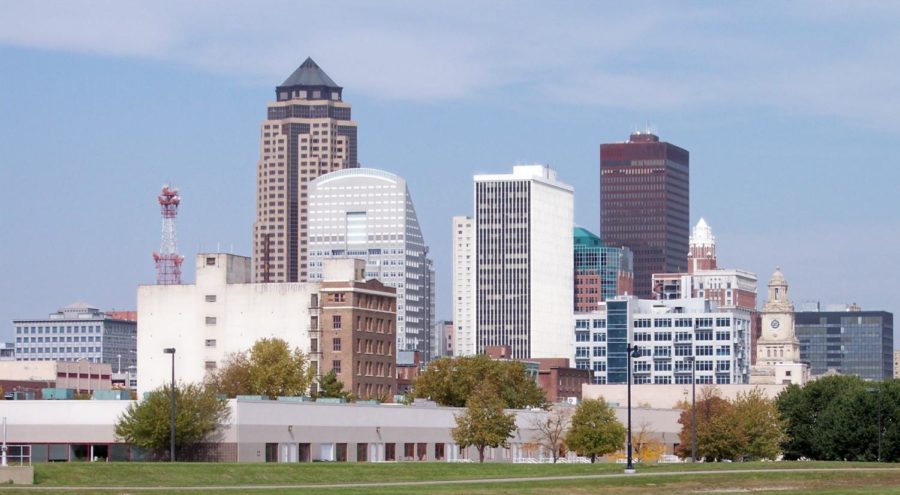Study shows slow signs of recovery in Iowa economy
January 22, 2020
Iowa’s job rate growth moves slowly in comparison to the national average, but the rate has increased by 7.1 percent in the decade since the Great Recession, according to an employment analysis from an Iowa State faculty member.
The employment study was conducted by David Swenson, associate scientist of economics.
Swenson studies Iowa’s economy and works on outreach and educational programs.
“This is something that I do all the time,” Swenson said. “I’ll look at different parts of the economy, and because we’re at the end of a decade, I did somewhat of a decade’s long retrospective, try to get an idea of how our economy has performed, taking into consideration the fact that a little over a decade ago, we started in a Great Recession and then had to recover.”
As stated in the study, it is a “comprehensive overview of how Iowa, its various industries and its rural and urban areas have fared since” the Great Recession.
The data used for the study was collected from the Bureau of Economic Analysis and the Bureau of Labor Statistics. Swenson said for the study he looked at how well Iowa’s economy did relative to other states.
While Iowa’s job rate has grown since the Great Recession, its recovery was not as strong when compared to the national average of a 16.1 percent increase and the job growth in the states surrounding Iowa averaging 9.4 percent.
“We ended up with the sixth worst recovery this decade when compared to all of the other states,” Swenson said. “And we grew more slowly over the course of from roughly mid-decade on until the last data point. So our recovery has been somewhat muted and my argument is it’s somewhat disappointing.”
The study found Iowa’s job growth rate ranked last among all bordering neighbors, last among all the Plains four states and sixth nationally between 2010 and 2018.
“In the report we have our mix of industries,” Swenson said. “We tend to be a little bit more loaded up on agriculture and ag-related industries, and we’re loaded up on manufacturing industries. We have more of them than the national average, and those are two sectors that are actually shedding jobs over time.”
A big part of Iowa’s economic activity, Swenson said, is those agriculture and manufacturing industries that aren’t growing. Other parts of the economy that have pretty reasonable growth include healthcare, social services, finance and insurance, lawyers, architects and more.
“Even though we have reasonably good growth in those areas, that growth is still less than the national rate of growth,” Swenson said. “So we’re just simply growing slower, even in some of those key growth sectors of the economy. You put those two things together, and we’re not growing as fast as one would hope we would.”
Swenson said there’s two economies in Iowa: metropolitan and non-metropolitan. The study found Iowa’s metropolitan counties explain the net of all the job growth.
Metropolitan counties had 111,774 more jobs in 2018 than 2007, a total increase of 9.3 percent. In that same time, non-metropolitan Iowa, the rural areas, lost 16,046 jobs, which is a 2 percent total declined growth rate.
Swenson said a metropolitan county that has a population of 50,000 or more, such as Story, Polk and Linn, and the smaller counties that depend on them are also considered as metropolitan counties. The rest of the counties are non-metropolitan areas.
“First of all, this decade and last decade, two-thirds of Iowa’s counties have been losing population, so that’s just a fact,” Swenson said. “We have two things going on. We have fewer job opportunities in these nonmetropolitan areas that, in part, is fueling depopulation, but depopulation is also fueling fewer job opportunities.”
Swenson said a decrease in population may lead to fewer job opportunities because of things like a lower demand for household goods and businesses having difficulty expanding because they can’t hire new people.
Manufacturing jobs also saw a difference in its recovery from the Great Recession. The manufacturing jobs in metropolitan areas recovered to levels pre-recession, while the nonmetropolitan manufacturing jobs declined by 5,636 between that same 2007 and 2018 time period.
Swenson’s study also found there were more jobs than the number of people employed. From 2010 to 2018, 137,549 jobs were added, but the number of people employed grew by 137,549. More than twice as many jobs as employed people were added to the state’s economy.
Something Swenson didn’t focus on for this particular study but said he is interested in are mid-sized cities, which are classified as micropolitan cities.
These populations can be anywhere from 10,000 up to to 49,000. There are 15 micropolitan cities in Iowa, 10 of which are not growing but are contracting.
The full study can be found on the Iowa State news service, “Signs of economic recovery, but Iowa’s job growth lags behind nation.”







